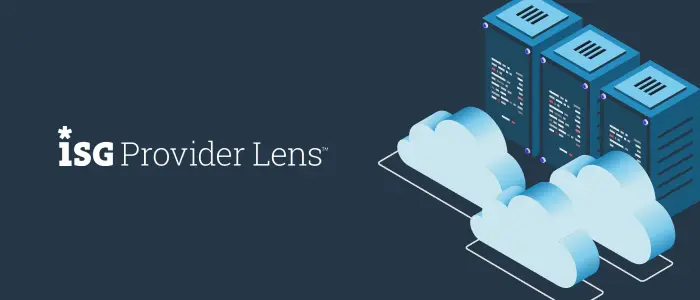
There has been a considerable amount of news following the Broadcom acquisition of VMware late last year. This includes organizational restructuring, executive departures, partner agreement changes and more. All of these moves are being made to streamline the business and ultimately maximize profits. One of the parts that’s become concerning for many existing VMware customers has been the product changes.
The VMware product portfolio is extensive and includes dozens of products that range from network security to in-memory databases. The challenge with such a large portfolio is that those selling and buying the products are often overwhelmed by the number of configurations and permutations that exist as options to reach the desired outcome.
This is evidenced by recent news that VMware previously had thousands of SKUs and dozens of bundles sold through hundreds of partners and OEMs. Streamlining a product portfolio typically starts with solidifying the flagship product and working out from there. The core of VMware’s business is their vSphere product which has dominated the server virtualization space for the last twenty years. This means that changes, such as the following are made with that thought in mind.
Recent VMware product changes:
This leads us to where VMware is looking to focus and accelerate revenue opportunities. VMware’s private cloud strategy has come back to the forefront of conversations and is built on their SDDC solution.
The VMware SDDC solution is the central component of VMware’s private cloud strategy that aims to enable customers to build out fully automated data centers. VMware vSphere is the core component of the solution and is where the workload runs but other parts of the stack such as networking and storage have been virtualized to deliver a software-defined capability. This is why the SDDC solution brings together various VMware products to provide computing, storage, networking, monitoring, and automation in a single solution.
The products included in the VMware Software-Defined Data Center solution:
Now that you have a solid understanding of the individual products let’s take a look at the product bundles used to deliver the SDDC solution.
As part of the process to streamline the portfolio, VMware has announced that many of the products in their portfolio will not be able to be sold a la carte but must be purchased as part of a bundle. This has led to VMware positioning two primary bundle offerings (VVF and VCF) for customers to be able to build a software-defined data center.
VMware vSphere Foundation (VVF)
The VVF is a new bundle for customers who want all the functionality of vSphere Enterprise Plus but also want monitoring, logging, and software-defined storage for their vSphere environment.
The VVF bundle includes the following products:
VMware Cloud Foundation (VCF)
The VCF bundle has been available for several years and VMware is simply updating it to align with the new product strategy. The solution is targeted at enterprise organizations that are more likely to utilize the additional functionality offered in the VCF bundle. The key differences between the VVF and VCF bundles are the inclusion of NSX and Aria Automation (part of Aria Suite Enterprise) as well as support for a larger vSAN deployment.
The VCF solution includes the following products:
Bundle Add-Ons
In addition to the two primary bundles customers can purchase add-ons to add additional functionality to their bundle:
Where Morpheus can help
Changes to the licensing and potential price increases have caused existing VMware customers to strongly consider alternative solutions. Commonly explored alternatives include Nutanix, Microsoft AzureStack HCI, Oracle Linux Virtualization Manager (OLVM), Proxmox, and others. The challenge that customers face is that they’ve commonly adopted other products of the VMware SDDC solution in addition to vSphere for server virtualization. This means that customers will be reviewing those tools as well given that they are purpose-built to integrate specifically with vSphere.
One of those tools is Aria Automation or vRealize Automation (vRA) as it was formerly known. Aria Automation’s primary value is in orchestrating the provisioning and decommissioning of virtual machines with a particular focus on vSphere VMs. This creates a problem for organizations that want to diversify their on-prem hypervisors as Aria Automation (vRA) does not natively support integrating with alternative hypervisors or Kubernetes distributions and its public cloud support is through the lens of VMware.
This is where the Morpheus platform helps by providing a vendor-agnostic replacement for Aria Automation (vRA) that has best-in-class integration with vSphere but also supports Nutanix (Element and Central), Hyper-V, KVM-based alternatives as well as the major public clouds. This enables customers to gradually transition their hypervisor estate, mitigate lock-in to Broadcom, or continue to run a heterogenous hypervisor environment. If you can avoid being upsold to an expensive VCF bundle and stick with VVF then Morpheus is a lower-cost and higher-value way to orchestrate developer self-service. If you are being pressured to increase VCF spend then be sure to calculate the true cost to deploy, extend, and manage Aria Automation beyond the license itself; we’re happy to help you with a TCO comparison.
We’ve helped dozens of large enterprises move off of Aria Automation (vRealize Automation) and enable agnostic provisioning into other hypervisors and clouds. We’d love to talk to you and see if there is a way for us to help you respond to your VMware licensing and lock-in concerns. Request time for a demo and discussion today!